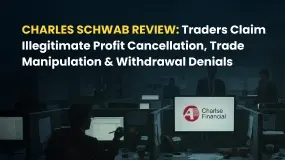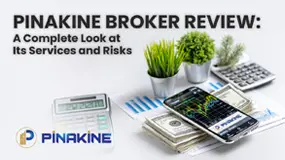简体中文
繁體中文
English
Pусский
日本語
ภาษาไทย
Tiếng Việt
Bahasa Indonesia
Español
हिन्दी
Filippiiniläinen
Français
Deutsch
Português
Türkçe
한국어
العربية
Understanding Liquidity in Forex Market Trading
Abstract:As the forex trading becomes more and more popular among investors, it is a must for you to come across the term "liquidity".

Forex market is often described as the most liquid financial market over other markets in the world and it is. Forex liquidity allows for ease of trade, making it easy to execute a trade quickly and at a desirable price because there are numerous buyers and sellers and the currencies being exchanged is standardized and in high demand.
What Is Forex Market Liquidity?
Forex Market Liquidity refers to how active the forex market is. It is determined by how many traders are actively trading and the total volume theyre trading. One reason the foreign exchange market is so liquid is because it is tradable 24 hours a day during weekdays. It is also a very deep market, with nearly $6 trillion turnover each day. Although liquidity fluctuates as financial centers around the world open and close throughout the day, there are usually relatively high volumes of forex trading going on all the time.
Who are the Forex Liquidity Providers?
The role of the liquidity provider is very important in order to protect the market against the volatility and support the volume of the trading transactions. In the forex market, liquidity providers are often banks, financial institutions, and brokers also known as market makers.
“Tier-1”Liquidity Providers
When a liquidity provider acts as a market maker, they are acting as both buyer and seller of an exchange rate or a given asset class. They literally try to “make a market” for currencies and other financial assets, while offering up their holdings for sale and actively buying simultaneously. In the currency markets, they take positions in currency pairs that can be offset by another market maker, or simply be adding to their books to be liquidated at a later point.
Functionally, this bridges the gap between market players in a market that can support higher trading volumes. Long-term traders can buy and sell currencies, without having to wait for another similar investor to do to the same. Many forex market makers keep an eye on call levels and orders for clients, and execute market orders on their behalf.
Large investment banks with big forex departments and commercial banking giants fall under the “Tier-1” level of liquidity providers in the forex market. They are considered the core liquidity providers, who can send orders to the markets at prices that best reflect the available information, along with the risks associated with transactions of holding a currency pair.
Big commercial banks are hugely involved in big corporations that require extensive foreign exchange transactions on a regular basis. This makes them one of the largest liquidity providers in the forex markets. They have different business models, which makes them capable of servicing the market in a variety of ways. For example, banks can facilitate large transactions, while Proprietary Trading Firms (PTFs) optimise price discovery for clients.
Examples of Tier 1 liquidity providers, who still remain highly active in the forex industry are Deutsche Bank, Morgan Stanley, UBS, Barclays, Societe Generale and Credit Suisse. Some of the clients of these providers include high net-worth individuals (HNWIs), smaller banks, large companies and hedge funds.
“Tier-2” Liquidity Providers
This is the second level of liquidity providers, who operate at the over-the-counter, inter-bank level. They are primarily market makers, who service clients from dealing desks. Most of these institutions are prominent forex brokers and commercial banking names, who serve retail clients. Almost 50% of all transactions in the financial markets are serviced by inter-bank liquidity providers, but small traders and companies cannot send their transactions directly to the banks, due to limited availability of technology and capital.
Tier-2 providers quote buy and sell prices on currency pairs to both professional counter-parties and non-professional counter-parties who demand quotations through their company's dealing desk. Through such transactions, they ensure proper architecture in the forex market, where there is always a buyer or seller present to fulfill the trade orders of retail clients.
Why does Liquidity Matter in Forex Market?
Forex liquidity refers to a currency pair's ability to be bought and sold without creating a major impact on its exchange rate. A currency pair is regarded as having a high level of liquidity when it can be bought or sold easily, and there is a significant amount of trading activity for that pair. The importance of liquidity in forex trading is clear to see since it is a key factor in being able to make a trade profitable. Having greater liquidity in a financial market enables an easier transaction flow and makes pricing more competitive.
Liquidity &Volatility
One significant factor related to liquidity is volatility.
Volatility is the measure of how drastically a market's prices change. A market's liquidity has a big impact on how volatile the market's prices are. Lower liquidity usually results in a more volatile market and cause prices to change drastically; higher liquidity usually creates a less volatile market in which prices don't fluctuate as drastically.
Forex liquid markets tend to move in smaller increments because its high liquidity results in lower volatility. More traders trading at the same time usually results in the price making small movements up and down. However, drastic and sudden movements are also possible in the forex market. Since currencies are affected by so many political, economical, and social events, there are many occurrences that cause prices to become volatile. Traders should be mindful of current events and keep up on financial news in order to find potential profit and to better avoid potential loss.
Liquidity Risk&Reward
The relationship between risk and reward in financial markets is almost always proportionate, so understanding the risks involved in a trade must be taken into consideration.
A primary example of liquidity risk in the forex market is the Swiss Franc crisis in 2015. The Swiss central bank announced they would no longer be preserving the Swiss Franc peg against the Euro causing the interbank market to become broken due to an inability to price the market. This led to brokers being unable to offer liquidity on CHF. As interbank pricing (the backbone of forex pricing) returned, EUR/CHF prices were far from the previous range. This led to retail client account balances for those trading CHF to be largely affected. While these “Black Swan” events are rare, they are not impossible.
Retail forex traders need to manage these liquidity risks by either lowering their leverage or making use of guaranteed stops whereby the broker is obligated to honour your stop price level.
Weighing up the options between liquidity risk and reward should not be overlooked and should be included as a part of a trader's analysis routine.
Advantages of Liquidity
If there is significant liquidity, traders can buy and sell assets rapidly at any time within market hours. This is often associated with reduced risk, as market participants can exit their positions quickly without a majorly impacting the asset's price.
Apart from being accessible and generally easier to trade, liquid markets are also characterized by more stable prices and higher levels of efficiency.
Disadvantages of Liquidity
There are very few drawbacks of liquidity, in fact, there are typically more drawbacks associated with a lack of liquidity – known as 'liquidity risk'.
If a market is illiquid, frequent and significant price movements can occur because the supply and demand of the traded security is low. Buyers and sellers may find they have to go to multiple parties, potentially with different prices, in order to get their order filled in their intended size.

Disclaimer:
The views in this article only represent the author's personal views, and do not constitute investment advice on this platform. This platform does not guarantee the accuracy, completeness and timeliness of the information in the article, and will not be liable for any loss caused by the use of or reliance on the information in the article.
Read more

Charles Schwab Review: Traders Claim Illegitimate Profit Cancellation, Trade Manipulation & More
Have you been lured into the Charles Schwab app for trading on the back of outrageous profit claims by the broker? Did you fail to receive any of these? Does the broker deny withdrawals every time you request and cancel your forex trading account? Have you been victimized financially by its trade manipulation? Act before you are left with a NIL balance in your account. Many traders have questioned Charles Schwab customer service and many other operational executives for the aforementioned illegitimate trading activities. In this Charles Schwab review article, we have shared some of their comments. Read on!

AMP Futures Exposed: Traders Raise Alarms Over Illegitimate Account Blocks & Bad Customer Service
Has AMP Futures blocked your forex trading account? Does it fail to provide any explanation for this act? Do you face issues concerning deposits to your AMP Futures account? Is the customer service non-existent for any trading query you raise with it? You are not alone! Many traders have been facing these issues upon AMP Futures login. Some of them have commented on AMP Futures review platforms. In this article, we have shared some reviews that you can look at. Read on!

FXGlory Review: Vanishing Profits, Capital Scams & Withdrawal Charges Keep Annoying Traders
Does FXGlory remove all your forex trading account balances upon fund withdrawal requests? Or do you witness incorrect trading account balances after fund withdrawals? Does the Saint Lucia-based forex broker charge you for fund withdrawals? All these and many more scam-related complaints have been filed against the forex broker. In this FXGlory review article, we will discuss several complaints. Read on!

PINAKINE Broker Review: A Complete Look at Its Services and Risks
Finding a trustworthy broker from the huge and often confusing world of online trading options is one of the biggest challenges a trader faces. In this competitive market, PINAKINE Liquidity Limited has appeared, getting attention with promises of high leverage and zero-commission trading. However, a closer look shows important factors that every potential client must think about before investing. The most important thing to consider with PINAKINE is that it has no regulation. This fact completely changes how risky the broker is and has major effects on how safe your investments will be. This review gives a complete and fair examination based on information available to the public. We will break down its services, trading conditions, platform technology, and the possible risks involved, helping you make a fully informed decision.
WikiFX Broker
Latest News
Stonefort Broker Review 2025: Legit or Risky? A Complete Analysis
Quantower Review 2025: User Reviews and Complaints in India
Uniglobe Markets Review 2025: A Safe Broker or a High-Risk Scam?
CHINA BEST Broker Review: Regulation and Risks
TD Markets Exposed: Price Manipulation, Withdrawal Issues & False Promises Hurt Traders
Bank of England holds rates steady in narrow vote ahead of Autumn Budget
BingX Review: Traders Angry Over Withdrawal Denials, Account Blocks & More
Chicago Fed's Goolsbee says he's cautious about further rate cuts during shutdown
These Are Europe's Top Economies By Projected 2026 GDP
Voices of the Golden Insight Award Jury | Tim Waterer, Chief Market Analyst of KCM Trade
Currency Calculator




